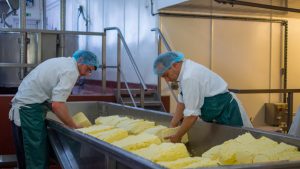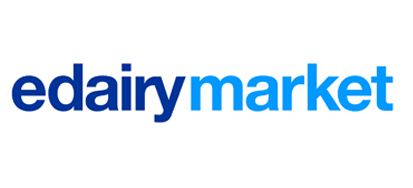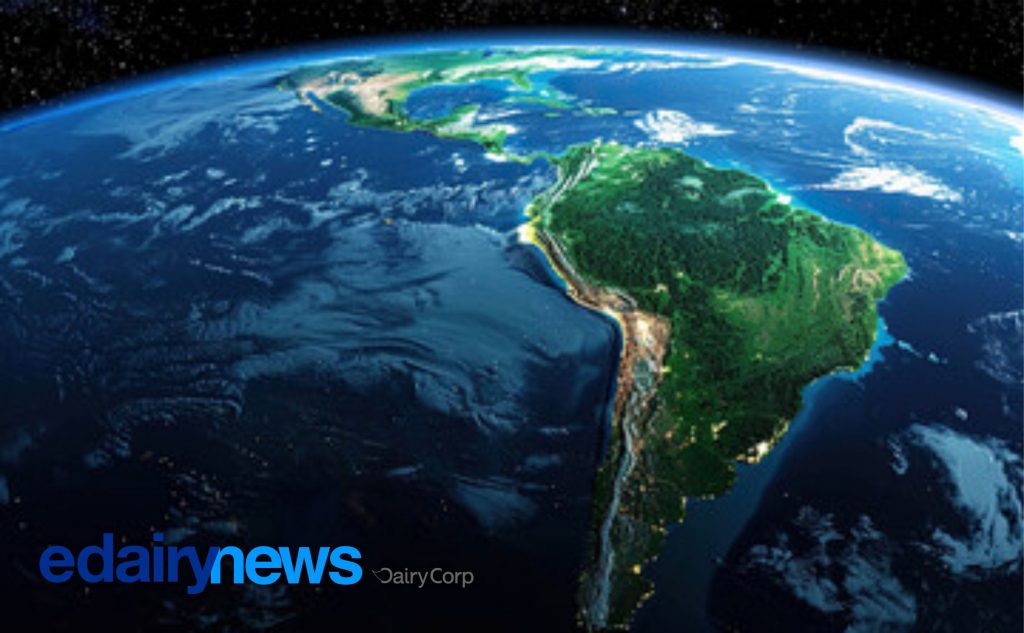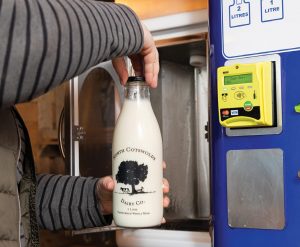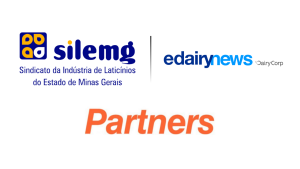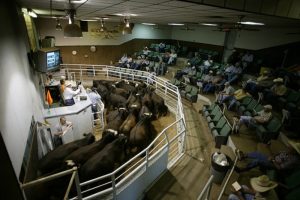
Europe: The Invisible Brake
Peder Tuborgh, CEO of Arla Foods, was blunt in stating that the lack of regulatory clarity in Europe is hindering investment in dairy infrastructure.
The pressure on producers to meet new environmental requirements—without a clear roadmap or long-term incentives—paralyzes sector growth.
No one invests millions in robotic milking systems or low-impact processing plants if they don’t know whether they’ll be able to recover the cost.
As Europe moves forward with climate commitments and restrictions on intensive livestock production, producers find themselves caught between ecological urgency and legal uncertainty.
The result: less milk, less investment, and global prices strained by reduced supply.
United States: tariffs, surpluses, and tensions
At the same time, the Trump administration reignites the flames of protectionism. With the threat of “reciprocal tariffs” on strategic partners like Mexico, Canada, and China, the U.S. dairy market is also stumbling.
According to the U.S. Department of Agriculture, the country exported about USD 8.2 billion in dairy products in 2024, but this record could deflate if major destinations impose retaliations.
They already have: Canada applied a 25% tariff on cheeses and butter, and China added 10% on certain products. Meanwhile, Mexico—its main buyer—watches cautiously.
The U.S. industry, which built up installed capacity to supply the world, could end up trapped in its own stockpile, with falling domestic prices and international contracts at risk.
Lucas Fuess, an analyst at Rabobank, warns of a double-edged sword: “It’s not just the uncertainty of tariffs, there’s also the potential for new logistical costs, like charges on ships operated by China. Nearly 40% of U.S. dairy exports are transported by sea.”
Investment, the first casualty
When prices collapse and markets become impenetrable, investment in the sector freezes. Companies stop betting on new plants, dairies don’t buy technology, banks tighten credit.
The dairy industry, by its very nature, requires planning and mid- to long-term horizons: cows, raising, milking, processing, logistics.
Who will invest if they don’t know whether their product will cross the border—or if they’ll have to pay 25% extra to enter their main market?
The latest CoBank report already shows drops in milk and whey futures. This not only reflects a loss of confidence but also certainty that surpluses will put pressure on prices.
It’s a dangerous equation: less investment, less employment, less competitiveness.
Opportunities in emerging markets
While the major powers get tangled in their own tensions, some countries are emerging as new players.
Brazil, for example, is starting to position itself as a future dairy exporter. Although its infrastructure and logistics still pose challenges, its production is growing, and its production cost appears competitive.
If it can consolidate its quality and establish sanitary agreements, it could fill vacant spaces in Asia or Africa.
Argentina, meanwhile, is dealing with an internal crisis that limits its export potential, but it has idle capacity, experience, and access to key markets.
Recent currency measures and the reopening of export registries could support an export rebound—if the context is favorable.
Chile and Uruguay, with smaller but efficient industries, can also capitalize on premium niches, especially in Asia, where origin labeling and traceability are increasingly valued.
New Zealand: the domino effect
As the world’s leading dairy exporter, New Zealand is also watching the conflict closely.
Every time the U.S. loses international competitiveness, the New Zealanders gain ground.
But even they could feel the ripple effects of a global contraction. Less investment means lower volume, less dynamism in trade, and greater price volatility.
Clear rules, safe milk
The dairy industry doesn’t thrive in murky terrain. It needs predictable regulatory frameworks, stable trade agreements, and policies that encourage sustainable investment.
Milk is not just another commodity: it’s food, jobs, community, and development.
If the world wants to keep drinking quality milk, it must understand that uncertainty not only halts investments—it also disrupts supply, punishes the producer, and threatens the consumer.
EDAIRYNEWS




